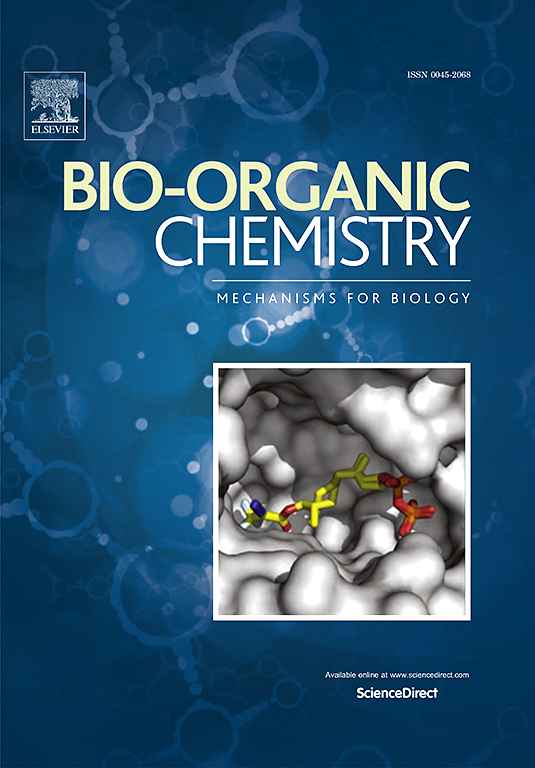Capturing and releasing cucurbitacins with α, β-unsaturated group from Cucumis melo based on reversibility of thia-Michael addition reaction
IF 4.5
2区 医学
Q1 BIOCHEMISTRY & MOLECULAR BIOLOGY
引用次数: 0
Abstract
Molecules containing α, β-unsaturated carbonyl structure have gained constant attention because of their potential of interacting with nucleophilic amino acid residues and further protein function regulating. However, current methods for finding and isolating such compounds are challenged by lacking of convenience and orientation. Herein we introduce a new strategy for capturing and releasing natural products with α, β-unsaturated group by regulating the direction of thia-Michael addition reaction. Target molecules could be separated from various impurities by means of controlling the association and dissociation with hydrophilic small sulfhydryl molecules and consequently change of polarity and solubleness. Our strategy showed effectiveness that natural products containing α, β-unsaturated esters and ketones could be successfully released from the adducts with cysteine. Finally, nine cucurbitacins with target functional group from the extract of Cucumis melo were enriched and isolated with high selectivity. This strategy may thus help to isolate natural products with α, β-unsaturated group in complex samples.

求助全文
约1分钟内获得全文
求助全文
来源期刊

Bioorganic Chemistry
生物-生化与分子生物学
CiteScore
9.70
自引率
3.90%
发文量
679
审稿时长
31 days
期刊介绍:
Bioorganic Chemistry publishes research that addresses biological questions at the molecular level, using organic chemistry and principles of physical organic chemistry. The scope of the journal covers a range of topics at the organic chemistry-biology interface, including: enzyme catalysis, biotransformation and enzyme inhibition; nucleic acids chemistry; medicinal chemistry; natural product chemistry, natural product synthesis and natural product biosynthesis; antimicrobial agents; lipid and peptide chemistry; biophysical chemistry; biological probes; bio-orthogonal chemistry and biomimetic chemistry.
For manuscripts dealing with synthetic bioactive compounds, the Journal requires that the molecular target of the compounds described must be known, and must be demonstrated experimentally in the manuscript. For studies involving natural products, if the molecular target is unknown, some data beyond simple cell-based toxicity studies to provide insight into the mechanism of action is required. Studies supported by molecular docking are welcome, but must be supported by experimental data. The Journal does not consider manuscripts that are purely theoretical or computational in nature.
The Journal publishes regular articles, short communications and reviews. Reviews are normally invited by Editors or Editorial Board members. Authors of unsolicited reviews should first contact an Editor or Editorial Board member to determine whether the proposed article is within the scope of the Journal.
 求助内容:
求助内容: 应助结果提醒方式:
应助结果提醒方式:


